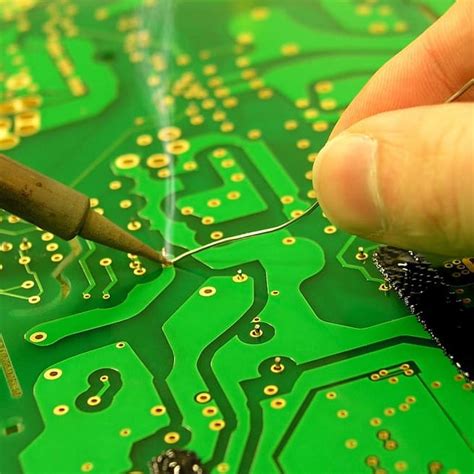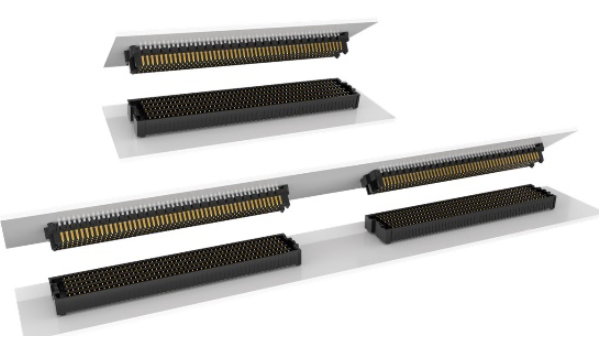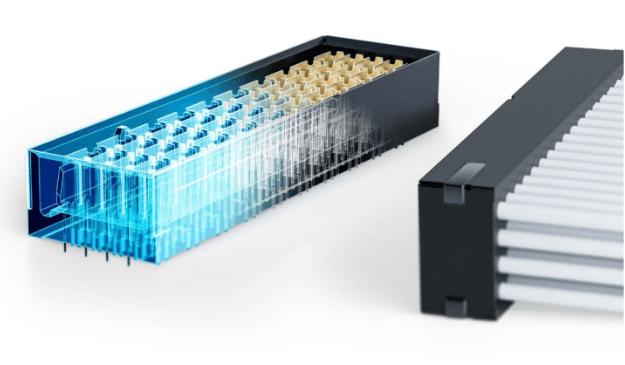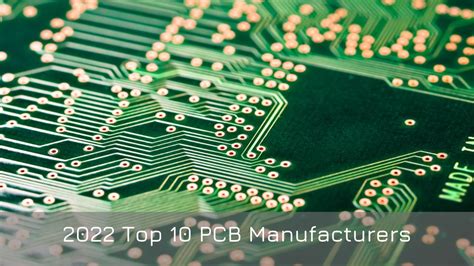High speed rigid flex pcb
Advantages Of High-Speed Rigid-Flex PCB In Modern Electronics
High-speed rigid-flex printed circuit boards (PCBs) have emerged as a pivotal innovation in the realm of modern electronics, offering a multitude of advantages that cater to the ever-evolving demands of contemporary technology.
As electronic devices become increasingly complex and compact, the need for efficient, reliable, and versatile circuit solutions has never been more critical. High-speed rigid-flex PCBs address these needs by combining the best attributes of both rigid and flexible circuits, thereby providing a unique solution that enhances performance and design flexibility.
One of the primary advantages of high-speed rigid-flex PCBs is their ability to support complex designs while maintaining a compact form factor.
This is particularly beneficial in applications where space is at a premium, such as in smartphones, wearable devices, and medical equipment. By integrating flexible and rigid sections, these PCBs allow for three-dimensional configurations, enabling designers to optimize the use of available space and reduce the overall size of the device.
This compactness does not come at the expense of performance; rather, it enhances the device’s functionality by allowing for more components to be integrated into a smaller area.
In addition to their space-saving benefits, high-speed rigid-flex PCBs offer superior signal integrity, which is crucial for high-speed data transmission.
The seamless integration of rigid and flexible layers minimizes the number of connectors and interconnections required, thereby reducing potential points of failure and signal loss. This results in improved electrical performance, as signals can travel with minimal interference and attenuation. Consequently, devices that rely on high-speed data processing, such as advanced computing systems and telecommunications equipment, can achieve greater efficiency and reliability.
Moreover, the durability and reliability of high-speed rigid-flex PCBs make them an ideal choice for applications subjected to harsh environments or mechanical stress.
The flexible layers provide a degree of resilience that allows the circuit to withstand bending, vibration, and thermal expansion without compromising its integrity. This robustness is particularly advantageous in automotive and aerospace industries, where electronic components must endure extreme conditions while maintaining optimal performance. The ability to withstand such challenges ensures that devices remain operational and reliable over extended periods, reducing the need for frequent maintenance or replacement.
Furthermore, high-speed rigid-flex PCBs contribute to cost efficiency in the manufacturing process.
By reducing the number of connectors and components required, these PCBs simplify assembly and lower production costs. The streamlined design also facilitates easier testing and troubleshooting, as the integrated nature of the circuit reduces the complexity of identifying and addressing potential issues. This not only accelerates the production timeline but also enhances the overall quality and reliability of the final product.
In conclusion, the advantages of high-speed rigid-flex PCBs in modern electronics are manifold, encompassing design flexibility, enhanced performance, durability, and cost efficiency.
As technology continues to advance, the demand for innovative circuit solutions that can meet the challenges of modern applications will only grow. High-speed rigid-flex PCBs are well-positioned to address these demands, offering a versatile and reliable solution that supports the development of cutting-edge electronic devices. By leveraging the unique benefits of these PCBs, manufacturers can create products that are not only more efficient and compact but also more resilient and cost-effective, ultimately driving progress in the ever-evolving landscape of modern electronics.

Design Considerations For High-Speed Rigid-Flex PCB
Designing high-speed rigid-flex PCBs requires a meticulous approach, as these advanced circuit boards combine the benefits of both rigid and flexible substrates, offering enhanced performance and reliability in complex electronic applications. As technology continues to evolve, the demand for high-speed data transmission has increased, necessitating careful consideration of various design elements to ensure optimal functionality.
One of the primary considerations in designing high-speed rigid-flex PCBs is signal integrity.
As data rates increase, maintaining signal integrity becomes crucial to prevent data loss and ensure accurate transmission. This involves minimizing signal reflections, crosstalk, and electromagnetic interference (EMI). To achieve this, designers must pay close attention to the impedance control of the traces. Impedance mismatches can lead to signal reflections, which degrade the quality of the signal. Therefore, maintaining consistent impedance throughout the circuit is essential, often requiring precise calculations and simulations during the design phase.
Moreover, the stack-up configuration of the PCB plays a significant role in its performance.
A well-designed stack-up can help manage electromagnetic fields and reduce crosstalk between layers. Typically, a balanced stack-up with alternating signal and ground layers is recommended to provide effective shielding and return paths for high-speed signals. Additionally, the use of ground planes can further enhance signal integrity by providing a low-inductance path for return currents, thereby reducing EMI.
Transitioning from signal integrity, thermal management is another critical aspect of high-speed rigid-flex PCB design.
As electronic components operate at higher speeds, they tend to generate more heat, which can adversely affect performance and reliability. Effective thermal management strategies, such as the incorporation of thermal vias, heat sinks, and appropriate material selection, are essential to dissipate heat efficiently. The choice of materials, particularly for the flexible sections, should consider thermal conductivity and expansion properties to prevent mechanical stress and potential failure.
Furthermore, the mechanical design of rigid-flex PCBs must accommodate the unique requirements of both rigid and flexible sections.
The flexible areas should be designed to withstand repeated bending and flexing without compromising the integrity of the circuit. This involves selecting suitable materials and ensuring that the bend radius is within acceptable limits to prevent damage. Additionally, the transition zones between rigid and flexible sections should be carefully designed to avoid stress concentration, which could lead to mechanical failure.
In addition to these technical considerations, manufacturability is a key factor in the design process.
High-speed rigid-flex PCBs are inherently more complex to manufacture than traditional rigid PCBs, requiring specialized processes and equipment. Designers must collaborate closely with manufacturers to ensure that the design is feasible and cost-effective to produce. This includes considering factors such as layer alignment, drilling precision, and the use of advanced fabrication techniques.
In conclusion, designing high-speed rigid-flex PCBs involves a comprehensive understanding of various technical and practical considerations. By focusing on signal integrity, thermal management, mechanical design, and manufacturability, designers can create robust and efficient PCBs that meet the demands of modern high-speed applications. As technology continues to advance, the importance of these considerations will only grow, underscoring the need for ongoing innovation and collaboration in the field of PCB design.

Manufacturing Challenges In High-Speed Rigid-Flex PCB Production
The production of high-speed rigid-flex printed circuit boards (PCBs) presents a unique set of manufacturing challenges that require careful consideration and precise execution. As the demand for more compact, reliable, and high-performance electronic devices continues to grow, the need for advanced PCB solutions like rigid-flex designs becomes increasingly critical. These PCBs combine the benefits of both rigid and flexible circuits, offering enhanced durability and versatility. However, the complexity involved in their production cannot be understated.
One of the primary challenges in manufacturing high-speed rigid-flex PCBs is the intricate design process.
These PCBs must accommodate both rigid and flexible sections, which necessitates a meticulous approach to layout and design. Engineers must ensure that the transition between rigid and flexible areas is seamless, as any misalignment can lead to signal integrity issues or mechanical failures. Moreover, the high-speed nature of these PCBs demands that signal paths be optimized to minimize interference and maintain performance. This requires advanced simulation tools and a deep understanding of electromagnetic principles to ensure that the final product meets the necessary specifications.
In addition to design complexities, material selection poses another significant challenge.
The materials used in high-speed rigid-flex PCBs must exhibit excellent electrical properties while also being able to withstand the mechanical stresses associated with bending and flexing. This often involves a careful balance between rigidity and flexibility, as well as considerations for thermal management. The choice of materials can significantly impact the overall performance and reliability of the PCB, making it a critical factor in the manufacturing process.
Furthermore, the fabrication process itself introduces several hurdles.
The integration of rigid and flexible layers requires precise lamination techniques to ensure strong adhesion and alignment. Any discrepancies during this stage can lead to delamination or other structural issues, compromising the integrity of the PCB. Additionally, the drilling and plating processes must be executed with high precision to accommodate the unique geometries of rigid-flex designs. This often necessitates specialized equipment and expertise, further complicating the manufacturing process.
Testing and quality assurance also present challenges in the production of high-speed rigid-flex PCBs.
Given their complex structure, these PCBs require comprehensive testing to verify their electrical performance and mechanical durability. Traditional testing methods may not be sufficient, necessitating the development of customized testing protocols to ensure that each PCB meets the stringent requirements of high-speed applications. This can be both time-consuming and costly, adding another layer of complexity to the manufacturing process.
Moreover, the rapid pace of technological advancement in the electronics industry means that manufacturers must continuously adapt to new requirements and standards.
This necessitates ongoing investment in research and development to stay ahead of emerging trends and maintain a competitive edge. As a result, manufacturers must be agile and innovative, constantly seeking new ways to improve their processes and deliver high-quality products.
In conclusion, the production of high-speed rigid-flex PCBs is fraught with challenges that span the entire manufacturing process, from design and material selection to fabrication and testing. Overcoming these challenges requires a combination of advanced technology, skilled expertise, and a commitment to quality. As the demand for sophisticated electronic devices continues to rise, the ability to successfully navigate these challenges will be crucial for manufacturers seeking to deliver cutting-edge PCB solutions.

Applications Of High-Speed Rigid-Flex PCB In Emerging Technologies
High-speed rigid-flex printed circuit boards (PCBs) are increasingly becoming a cornerstone in the development of emerging technologies, offering a unique blend of flexibility and durability that is essential for modern electronic applications. As the demand for more compact, efficient, and reliable electronic devices grows, the role of high-speed rigid-flex PCBs becomes even more critical. These advanced PCBs are particularly valuable in applications where space constraints and performance requirements are paramount, providing a versatile solution that meets the needs of various cutting-edge technologies.
One of the primary applications of high-speed rigid-flex PCBs is in the field of telecommunications.
With the advent of 5G technology, there is a pressing need for components that can handle high-frequency signals with minimal loss. High-speed rigid-flex PCBs are well-suited for this purpose, as they can support the complex architectures required for 5G infrastructure while maintaining signal integrity. Their ability to integrate multiple layers and components into a single board reduces the need for interconnections, thereby minimizing signal loss and enhancing overall performance. This makes them an ideal choice for use in base stations, antennas, and other critical components of the 5G network.
In addition to telecommunications, the automotive industry is also experiencing a significant transformation with the rise of electric and autonomous vehicles.
These vehicles require sophisticated electronic systems to manage everything from battery performance to navigation and safety features. High-speed rigid-flex PCBs are instrumental in these applications due to their ability to withstand harsh environmental conditions while maintaining high performance. Their flexibility allows for innovative design solutions that can fit into the limited space available in modern vehicles, while their rigidity ensures durability and reliability over time. This combination is crucial for the development of advanced driver-assistance systems (ADAS) and other electronic control units (ECUs) that are essential for the safe and efficient operation of next-generation vehicles.
Moreover, the medical industry is another sector where high-speed rigid-flex PCBs are making a significant impact.
As medical devices become more compact and portable, the need for reliable and high-performance electronic components becomes increasingly important. High-speed rigid-flex PCBs offer the perfect solution, providing the necessary flexibility to accommodate complex device designs while ensuring the precision and reliability required in medical applications. From wearable health monitors to advanced imaging systems, these PCBs enable the development of innovative medical technologies that improve patient care and outcomes.
Furthermore, the aerospace and defense industries also benefit from the unique properties of high-speed rigid-flex PCBs.
In these sectors, electronic systems must endure extreme conditions, including high temperatures, vibrations, and radiation. High-speed rigid-flex PCBs are designed to meet these challenges, offering robust performance and reliability in even the most demanding environments. Their ability to integrate multiple functions into a single board reduces weight and space requirements, which is particularly advantageous in aerospace applications where every gram counts.
In conclusion, high-speed rigid-flex PCBs are playing a pivotal role in the advancement of emerging technologies across various industries. Their unique combination of flexibility, durability, and high performance makes them an indispensable component in the development of next-generation electronic devices. As technology continues to evolve, the applications of high-speed rigid-flex PCBs are likely to expand further, driving innovation and enabling new possibilities in telecommunications, automotive, medical, aerospace, and beyond.







